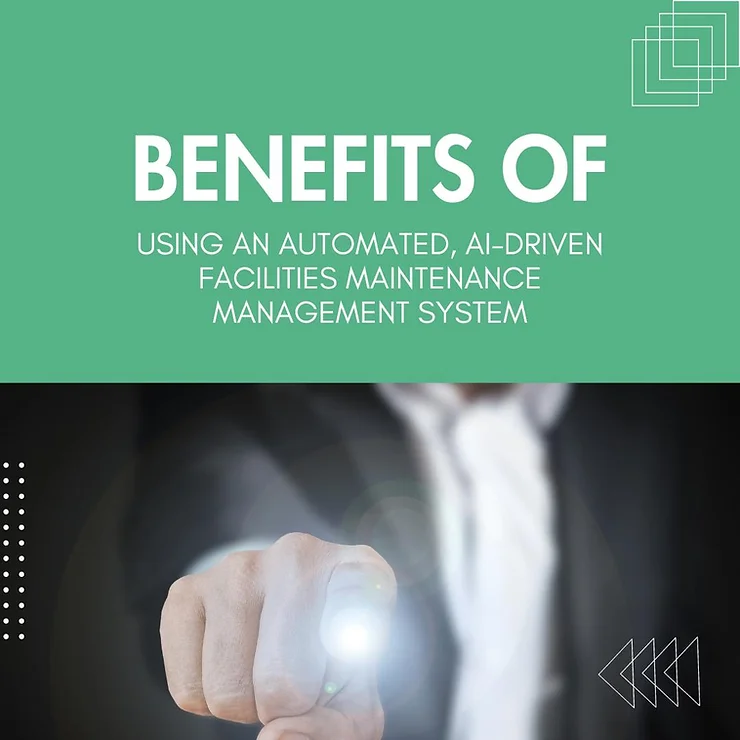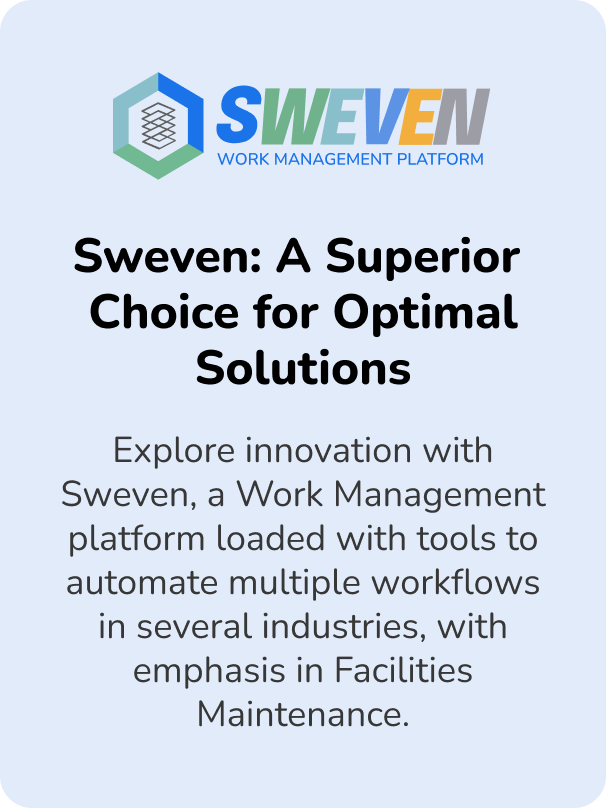In the rapidly evolving landscape of facility management, staying ahead requires embracing innovative technologies that streamline operations, enhance efficiency, and drive optimal performance. Enter the automated, AI-driven Facilities Maintenance Management System (FMMS)

In this blog, we explore the profound benefits that such a system brings to the table, revolutionizing the way facilities are managed and maintained.
1. Seamless Workflow Automation: An AI-driven FMMS automates routine tasks and workflows, minimizing the need for manual intervention. From work order generation and scheduling to resource allocation, the system ensures that processes flow seamlessly, freeing up valuable human resources for more strategic tasks.
2. Predictive Maintenance Precision: AI empowers FMMS to analyze historical and real-time data to predict maintenance needs accurately. This predictive capability helps in identifying potential issues before they escalate, reducing downtime and extending the lifespan of assets.
3. Enhanced Asset Management: Automated FMMS allows for meticulous asset tracking and management. AI algorithms can categorize assets, track their condition, and recommend optimal maintenance schedules based on usage patterns and performance data.
4. Optimized Resource Allocation: The system intelligently allocates resources such as labor, spare parts, and tools. By optimizing resource distribution, facilities can maintain efficient operations, reduce waste, and minimize downtime due to resource shortages.
5. Data-Driven Decision Making: AI-driven FMMS generates actionable insights from the data it collects and analyzes. Facility managers can make informed decisions based on real-time information, leading to better planning and strategic choices.
6. Streamlined Work Order Management: Work orders are essential for maintenance tasks. Automated FMMS handles work order generation, assignment, and tracking, ensuring tasks are completed on time and avoiding delays caused by manual coordination.
7. Reduced Downtime and Costs: With predictive maintenance and efficient scheduling, downtime due to unexpected breakdowns is minimized. This leads to cost savings by preventing costly emergency repairs and reducing production losses.
8. Improved Vendor Management: An AI-driven FMMS can assist in vendor selection, performance evaluation, and contract management. This ensures that outsourced maintenance tasks are carried out effectively, aligning with the facility’s needs.
9. Real-Time Monitoring: AI-driven sensors and IoT integration enable real-time monitoring of critical systems. Facilities managers can receive alerts and updates, enabling them to respond swiftly to anomalies or emergencies.
10. Scalability and Adaptability: As facilities expand or change, an AI-driven FMMS adapts and scales accordingly. This ensures that the system remains effective in managing larger or evolving facilities.
11. Enhanced Safety and Compliance: Automated FMMS helps maintain safety standards by ensuring that maintenance tasks are executed according to regulations and guidelines. This reduces the risk of accidents and compliance-related issues.
12. Efficiency in Energy Management: AI-driven FMMS can help optimize energy consumption by identifying energy inefficiencies and recommending improvements. This leads to reduced energy costs and a smaller environmental footprint.
13. Fostering Strategic Planning: With routine tasks automated, facilities managers can focus on strategic planning and proactive improvements, driving continuous enhancement and innovation.
Conclusion: Elevating Facilities Management with Automation and AI
The transition to an automated, AI-driven Facilities Maintenance Management System isn’t just a technological advancement; it’s a strategic move toward achieving unprecedented efficiency, accuracy, and excellence in facility management. By harnessing the power of automation and AI, organizations can elevate their operations, reduce costs, enhance asset lifespan, and unlock new avenues for growth in an increasingly competitive landscape. The future of facility management is here, and it’s driven by the transformative potential of automation and artificial intelligence.






















